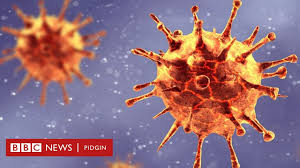“The variant was first detected in the US on October 23, yet between December 1, 2020 and January 19, 2021, it rose to represent 27.8 percent and 11.3 percent of all SARS-CoV-2 genomes sequenced from Louisiana and New Mexico, respectively.”
Continuing, the study noted that “Q677P cases have been detected predominantly in the south central and southwest United States; and, as of February 3, 2021, GISAID data show 499 viral sequences of this variant from the USA.
“Phylogenetic analyses revealed the independent evolution and spread of at least six distinct Q677H sub-lineages, with first collection dates ranging from mid August to late November, 2020.
“Four 677H clades from clade 20G (B.1.2) , 20A (B.1.234), and 20B (B.1.1.220, and B.1.1.222) each contain roughly 100 or fewer sequenced cases, while a distinct pair of clade 20G clusters are represented by 754 and 298 cases, respectively.”
Co-author of the study and virologist at Lousiana State University Health Sciences Centre, Jeremy Kamil, said something was going on with the mutation.
Kamil said he noticed the new variants, which have the same amino acid while sequencing coronavirus samples, noting that scientist are worried the mutations could potentially make it easier for the new virus to enter human cells.
The viruses, he said, all belonged to the same lineage, adding that after inputting the genome into an online database used by other scientists, he discovered that there were scientists in New Mexico who also found the same variant with the same mutation.
Recall that more contagious COVID-19 variants were first discovered in the United Kingdom and South Africa.
The United Kingdom variant, known as B.1.1.7, is 35 percent to 45 percent more transmissible than other strains spreading in the US, experts say; while a new assessment by British government scientists found that the same variant could be 30 percent to 70 percent deadlier than the original coronavirus.
According to the World Health Organisation, the South African variants causing concern are the B.1.351 or the 501Y.V2, which was later reported in Botswana, Zambia and some other countries. The variants are believed to be more transmissible.
The WHO in January said that the increase in COVID-19 cases and deaths in Africa were due to the new more contagious variants of the virus, noting that the 501Y.V2 variant, first identified in South Africa, has been found in Botswana, Ghana, Kenya, Comoros, Zambia and in 24 non-African nations.
WHO also disclosed that the variant that was initially detected in the United Kingdom, has been found in The Gambia and Nigeria, noting that further research was required to determine whether the new strain causes more severe illness.
source: Punch

 United States researchers say they have discovered seven new variants of COVID-19. They noted that the newly discovered variants could be more transmissible. In the study, published online in medRxiv, the researchers said that while it is still unclear if the strains are more contagious, they are concerned the seven new virus mutations were in the same genetic letter.
United States researchers say they have discovered seven new variants of COVID-19. They noted that the newly discovered variants could be more transmissible. In the study, published online in medRxiv, the researchers said that while it is still unclear if the strains are more contagious, they are concerned the seven new virus mutations were in the same genetic letter.




